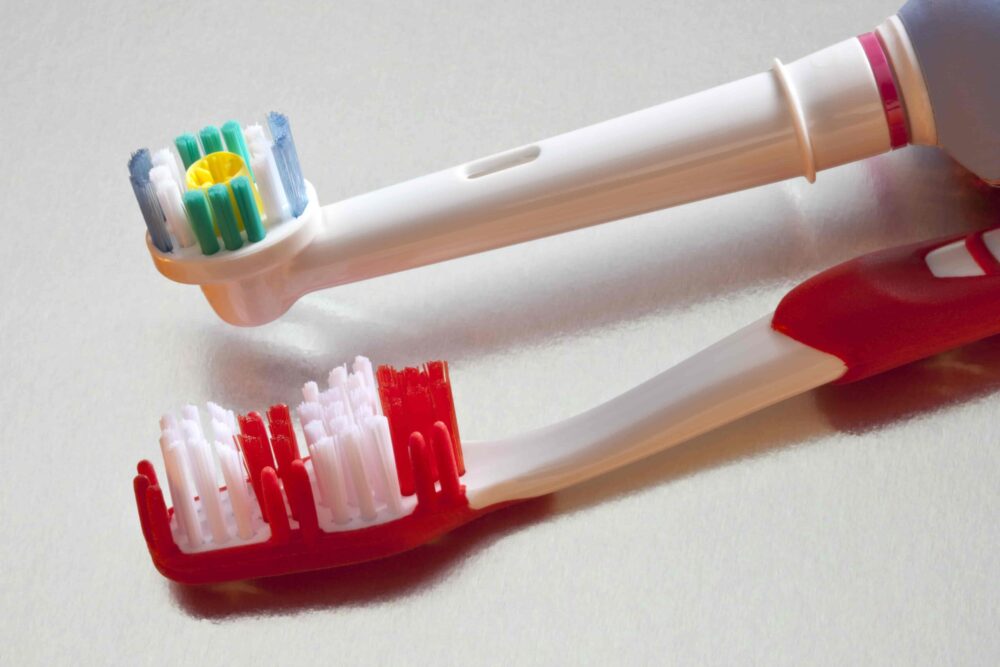When it comes to brushing your teeth, one question often sparks debate: Are electric toothbrushes actually better than manual ones? While both can be effective when used correctly, the science points to some clear advantages of electric options. At Pecan Tree Family Dentistry, we’re here to help you make informed decisions about your oral health—including which toothbrush may suit you best.
Manual vs. Electric: What’s the Difference?
Manual Toothbrush
- Traditional design
- Requires manual back-and-forth motion
- You control speed, angle, and pressure
Electric Toothbrush
- Battery-powered with oscillating or sonic motion
- Offers consistent speed and movement
- Often comes with built-in timers and sensors
Scientific Comparison: Manual vs. Electric
🦷 1. Plaque Removal
Studies show electric toothbrushes remove up to 21% more plaque than manual brushes. The consistent, high-speed motion helps dislodge bacteria more efficiently, reducing the risk of cavities and gum disease.
🦷 2. Gum Health
Electric brushes are gentler on gums and reduce inflammation more effectively. A Cochrane Review found that people using electric toothbrushes had significantly less gingivitis after just three months.
🦷 3. Ease of Use
Electric toothbrushes benefit:
- Children
- Seniors
- People with arthritis or limited dexterity
They require less effort and provide a more consistent clean.
🦷 4. Brushing Time
Many electric brushes include:
- 2-minute timers
- Quad pacers (30 seconds per quadrant)
This helps users meet the ADA’s recommended brushing duration.
🦷 5. Brushing Technique
Electric toothbrushes assist users who struggle with proper technique. Their built-in motion helps maintain effective brushing angles and gentle pressure.
When Manual Brushes Are Still Effective
Manual toothbrushes are:
- Budget-friendly
- Easy to transport
- Widely available
When paired with proper technique (2 minutes of brushing, gentle strokes, and full-mouth coverage), they can be just as effective as electric models.
🧠 Want to boost your brushing technique? Read our blog on reversing cavities naturally with proper oral hygiene.
Which One Is Right for You?
Choose an electric toothbrush if you:
- Struggle with brushing thoroughly
- Have sensitive gums
- Prefer built-in timers and convenience
Stick with manual if you:
- Have excellent technique
- Want a more affordable option
- Don’t mind putting in the effort
🦷 Looking for more ways to keep your smile healthy? Check out our dental cleaning services to maintain a strong routine.
Final Thoughts
Whether you go electric or stick with a manual brush, consistency and proper technique are key. Make sure to brush twice a day, floss daily, and see your dentist for regular checkups.
📞 Need personalized oral care advice?
Contact Pecan Tree Family Dentistry or call (972) 562-0767.



